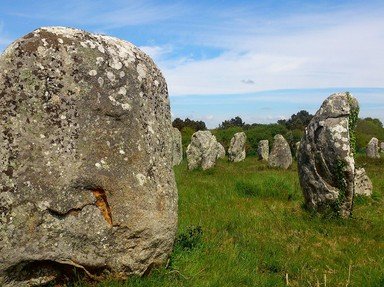Quiz Answer Key and Fun Facts
1. Which species of prehistoric man was found at Boxgrove?
2. The Amesbury archer found near Stonehenge dates from 2300BC (when work on the henge was starting). Where is he believed to come from?
3. Which of these is a type of Bronze age barrow?
4. What is the *strictest* definition of a "henge"?
5. What is a causewayed camp?
6. What is a rath?
7. What was or were Grimes graves?
8. Which of these would you be surprised to find on a purely Bronze age site?
9. When was the first description of a pre-historic implement found in Britain published?
10. In addition to the henge which of these is the most noticeable prehistoric sight at Avebury?
Source: Author
tnrees
This quiz was reviewed by FunTrivia editor
bloomsby before going online.
Any errors found in FunTrivia content are routinely corrected through our feedback system.

